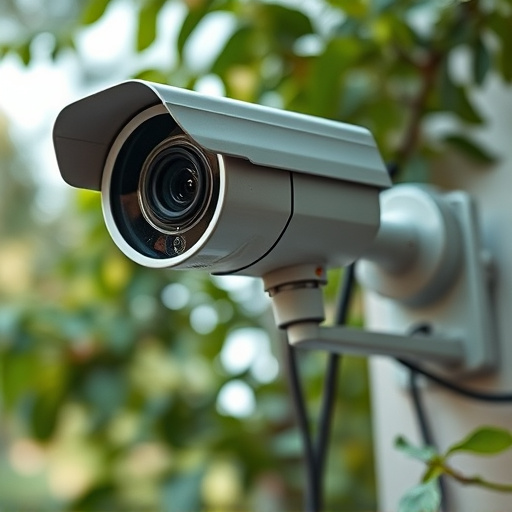Fake security cameras, strategically placed in high-risk areas and public spaces, significantly reduce burglaries, vandalism, and other crimes by enhancing neighborhood surveillance. This method involves a thorough risk assessment, engaging with residents and law enforcement, and positioning decoy cameras near entry points and lighting fixtures. Combining them with motion-activated lights further deters criminals while illuminating vulnerable spots. Implementing this strategy requires understanding local laws and building community acceptance to maintain trust and privacy. Regular maintenance ensures the cameras' effectiveness in neighborhood crime prevention.
In today’s digital age, fake security cameras offer a unique approach to neighborhood crime prevention. This article delves into the strategic placement of these innovative devices, exploring their role in deterring criminal activity. We’ll guide you through understanding the dynamics of fake cameras, assessing neighborhood risks, and implementing discreet placement tactics. Additionally, we’ll discuss legal considerations and maintenance tips to ensure optimal safety. Discover how this technology can transform community surveillance.
- Understanding Fake Security Cameras and Their Role in Crime Prevention
- Assessing Neighborhood Risks: Identifying High-Risk Areas for Camera Placement
- Effective Strategies for Discreetly Placing Fake Cameras
- Legal Considerations and Community Acceptance of Fake Surveillance Equipment
- Enhancing Safety with Realistic Maintenance Tips for Fake Security Camera Systems
Understanding Fake Security Cameras and Their Role in Crime Prevention
Fake security cameras, also known as decoy or dummy cameras, are an innovative tool in neighborhood crime prevention. These devices serve as visual deterrents, designed to mislead potential criminals by creating the appearance of enhanced surveillance. By strategically placing fake cameras around residential areas, communities can significantly reduce the likelihood of criminal activity.
They play a crucial role in making would-be perpetrators think twice before committing offenses. The realistic designs and strategic positioning of these dummy cameras can help deter burglaries, vandalism, and other forms of neighborhood crime. Moreover, their presence may contribute to a heightened sense of security among residents, fostering a safer and more peaceful community environment.
Assessing Neighborhood Risks: Identifying High-Risk Areas for Camera Placement
When implementing a fake security camera placement strategy for neighborhood crime prevention, assessing risks is key. The first step involves identifying high-risk areas based on past criminal activity and community feedback. By analyzing crime patterns, such as frequent burglaries or vandalism incidents, you can pinpoint specific locations that require enhanced surveillance. Engaging with local residents and law enforcement agencies can provide valuable insights into potential hazards and problem spots within the neighborhood.
This risk assessment should consider factors like accessibility, visibility, and the type of criminal activity prevalent in each area. For instance, cameras strategically placed near back alleys or poorly lit areas may deter thefts or vandalism. Fake cameras can also be effectively utilized in heavily trafficked public spaces to discourage various types of crimes, including petty theft or aggressive behavior.
Effective Strategies for Discreetly Placing Fake Cameras
Placing fake security cameras can be a powerful strategy for neighborhood crime prevention, but discretion is key to making them effective. One effective approach is to mimic real camera placements found in homes and businesses. This could mean positioning fake cameras at strategic points around a property, such as near entryways, windows, or outdoor lighting fixtures. By blending in with authentic security setups, these dummy cameras can deter potential criminals without drawing unnecessary attention.
Another strategy involves using motion-activated lights alongside fake cameras. Installing these combinations can create the illusion of constant surveillance while also illuminating areas that may be prone to crime. When combined with realistic-looking camera designs, these measures can significantly enhance neighborhood security and serve as a powerful deterrent for would-be intruders.
Legal Considerations and Community Acceptance of Fake Surveillance Equipment
While fake security cameras can be an effective tool for neighborhood crime prevention, it’s crucial to consider legal implications and community acceptance before deployment. Legality varies by region; some areas have strict rules regarding surveillance equipment placement, especially when it comes to private property lines and public spaces. Homeowners should research local laws and obtain any necessary permits to avoid legal repercussions.
Community acceptance is equally important. Openly displaying fake cameras can deter crime, but residents must also be comfortable with their presence. Transparent communication about the system’s purpose and limitations can foster trust and ensure neighbors feel secure without invoking feelings of constant surveillance.
Enhancing Safety with Realistic Maintenance Tips for Fake Security Camera Systems
Maintaining a fake security camera system effectively is a key component in enhancing safety, especially for neighborhoods aiming to prevent crime. While these cameras are designed to look real, they require regular care to ensure their visual integrity and deter potential criminals. A simple cleaning routine can go a long way in keeping them realistic and functional. Use a soft cloth to wipe down the camera lenses periodically, removing any dust or debris that could impair vision. This minor maintenance step significantly improves the system’s overall effectiveness as a deterrent.
Additionally, checking the power sources and ensuring they are secure is crucial. Just like real cameras, fake ones need reliable power to operate. Regularly inspect cables and connectors for any signs of damage or loose connections. Replacing batteries or charging them promptly prevents unexpected outages that could compromise security. By implementing these realistic maintenance tips, neighborhood residents can maximize the benefits of fake security camera systems in crime prevention efforts.
Implementing fake security camera placement strategies can significantly enhance neighborhood crime prevention. By understanding the role of these cameras, assessing local risks, and employing discreet placement techniques, communities can create a sense of safety and deter potential criminals. Legal considerations and community acceptance are crucial aspects to navigate, ensuring that the use of fake surveillance equipment aligns with ethical standards. With realistic maintenance practices, these systems can effectively contribute to a safer environment, acting as a powerful tool in neighborhood crime prevention efforts.
